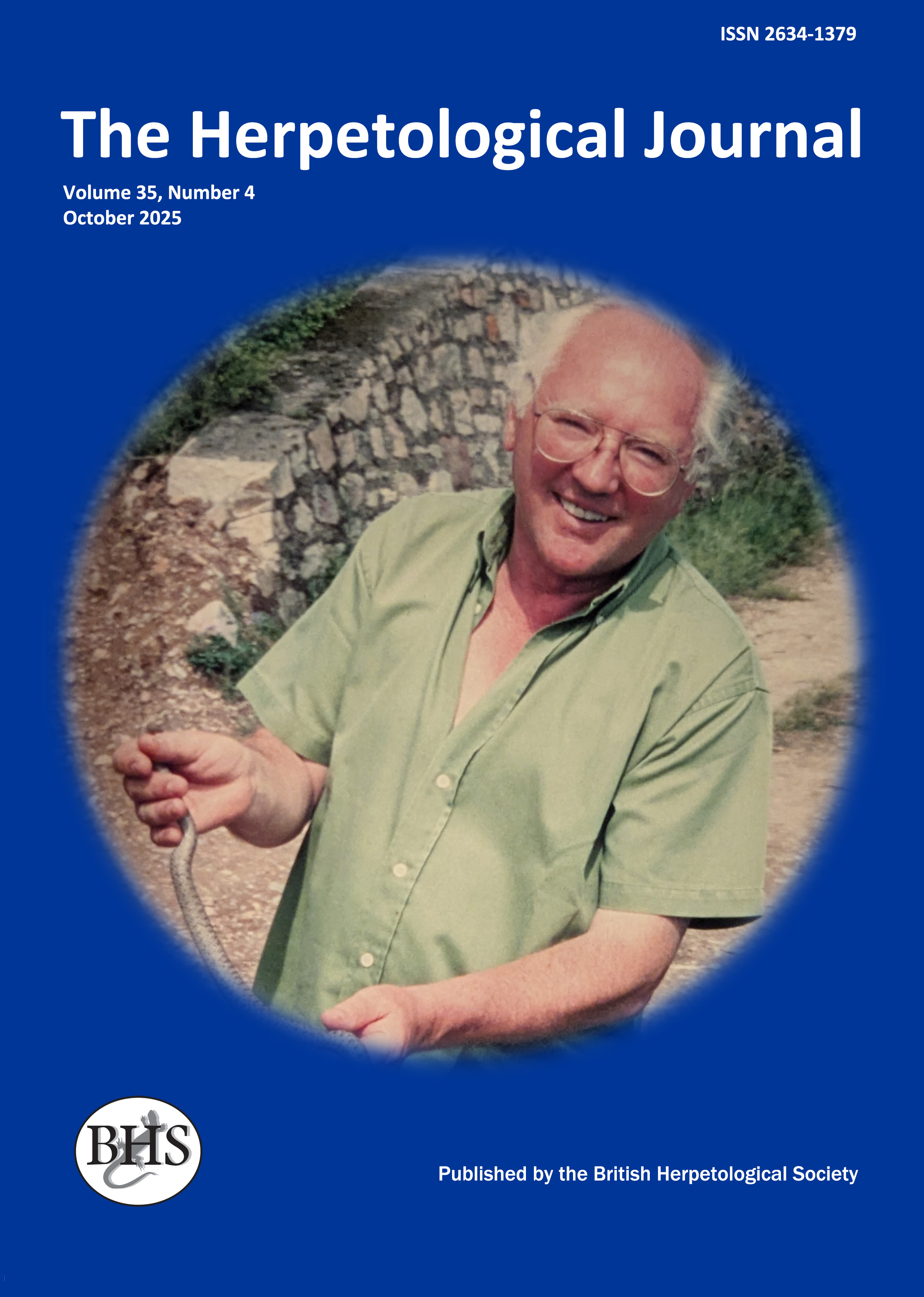
The Herpetological Journal
The Herpetological Journal is the Society's prestigious quarterly scientific journal. Articles are listed in Biological Abstracts, Current Awareness in Biological Sciences,Current Contents, Science Citation Index, and Zoological Record.
ISSN 0268-0130
2023 Impact Factor for the Herpetological Journal is 1.1, with the Journal sitting just below Quartile 2 in Zoology, at percentile 46.9
pdf 01. Discovering the biogeographic history using predefined areas and explicit geographical data in the South American Liolaemus elongatus group (Iguania: Liolaemidae)
831 downloads
Open Access
https://doi.org/10.33256/hj30.2.5368
pp. 53-68
Authors: María Soledad Ruiz, Sabrina Noelia Portelli, Thomas Nathaniel Hibbard & Andrés Sebastián Quinteros
Abstract: The genus Liolaemus includes 268 species, classified in two subgenera, Eulaemus and Liolaemus sensu stricto. The latter is formed by 12 monophyletic groups; one of them being the Liolaemus elongatus group, distributed in South America. We studied the biogeographic history of the L. elongatus group. We obtained a phylogenetic hypothesis recovering five main clades: the L. punmahuida, L. elongatus sensu stricto, L. kriegi, L. petrophilus and L. capillitas clades. Based on that hypothesis we obtained a time calibrated tree. The ancestral ranges were estimated applying three methodologies: DEC, DEC+j (using predefined areas) and GEM (using explicit geographical data). Our results show that the ancestral area of the L. elongatus group was located in central Argentina, and its divergence began around 11.5 Mya. From here, a combination of events (founder events and/or vicariances) led the species to their current distribution. Despite their differences, DEC+j and GEM show congruent results.
Keywords: biogeography, divergence times, ancestral area, lizards

